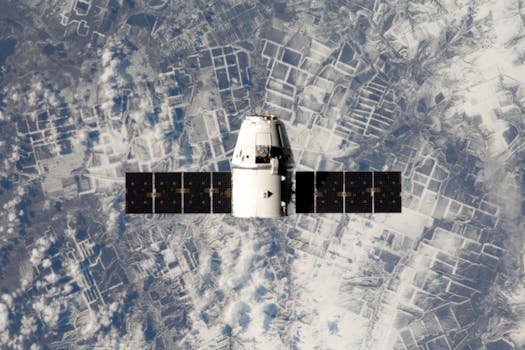Future of Satellites: Revolutionizing Global Connectivity
The future of satellites is expected to revolutionize global connectivity, enabling faster and more reliable communication services. With advancements in space technology, satellites are becoming increasingly important for various industries, including telecommunications, navigation, and weather forecasting.

Future of Satellites: Revolutionizing Global Connectivity
The future of satellites is expected to revolutionize global connectivity, enabling faster and more reliable communication services. With advancements in space technology, satellites are becoming increasingly important for various industries, including telecommunications, navigation, and weather forecasting. In this article, we will explore the future of satellites and their potential impact on global connectivity.
Satellites have been a crucial part of our daily lives for decades, providing us with television channels, GPS navigation, and weather forecasts. However, the future of satellites holds much more promise, with the potential to enable global connectivity, bridge the digital divide, and facilitate the growth of various industries. The development of new satellite technologies, such as low-Earth orbit (LEO) satellites and high-throughput satellites (HTS), is expected to play a significant role in shaping the future of satellites.
Advancements in Satellite Technology
Recent advancements in satellite technology have led to the development of smaller, lighter, and more efficient satellites. These advancements have enabled the launch of large constellations of satellites, which can provide global coverage and enable a wide range of services, including broadband internet, mobile connectivity, and IoT applications. The use of advanced materials and manufacturing techniques has also reduced the cost of satellite production, making it more accessible to a wider range of industries and applications.
One of the most significant advancements in satellite technology is the development of LEO satellites. LEO satellites are designed to operate in low-Earth orbit, at an altitude of around 160 to 2,000 kilometers. They have several advantages over traditional geostationary satellites, including lower latency, higher bandwidth, and improved coverage. LEO satellites are expected to play a crucial role in enabling global connectivity, particularly in remote and underserved areas.
Applications of Satellites
Satellites have a wide range of applications, including telecommunications, navigation, weather forecasting, and Earth observation. The future of satellites is expected to enable new applications and services, such as satellite-based broadband internet, mobile connectivity, and IoT applications. Satellites can also play a crucial role in disaster response and recovery, providing critical communication services and supporting the deployment of emergency responders.
The use of satellites in telecommunications is expected to grow significantly in the coming years, driven by the increasing demand for global connectivity and the need for reliable and secure communication services. Satellites can provide broadband internet services to remote and underserved areas, enabling access to education, healthcare, and other critical services. They can also support the growth of IoT applications, such as smart cities, smart homes, and industrial automation.
Challenges and Opportunities
Despite the many advantages and opportunities presented by satellites, there are also several challenges that need to be addressed. One of the biggest challenges is the risk of space debris, which can pose a significant threat to the safety and operation of satellites. The increasing number of satellites in orbit also raises concerns about congestion and interference, which can impact the performance and reliability of satellite services.
However, these challenges also present opportunities for innovation and growth. The development of new technologies and services, such as satellite-based debris removal and active debris removal, can help to mitigate the risks associated with space debris. The use of advanced materials and manufacturing techniques can also reduce the cost and environmental impact of satellite production, making it more sustainable and accessible to a wider range of industries and applications.
Conclusion
In conclusion, the future of satellites is expected to revolutionize global connectivity, enabling faster and more reliable communication services. With advancements in space technology, satellites are becoming increasingly important for various industries, including telecommunications, navigation, and weather forecasting. While there are challenges that need to be addressed, the opportunities presented by satellites are significant, and their potential impact on global connectivity and economic growth is substantial.



